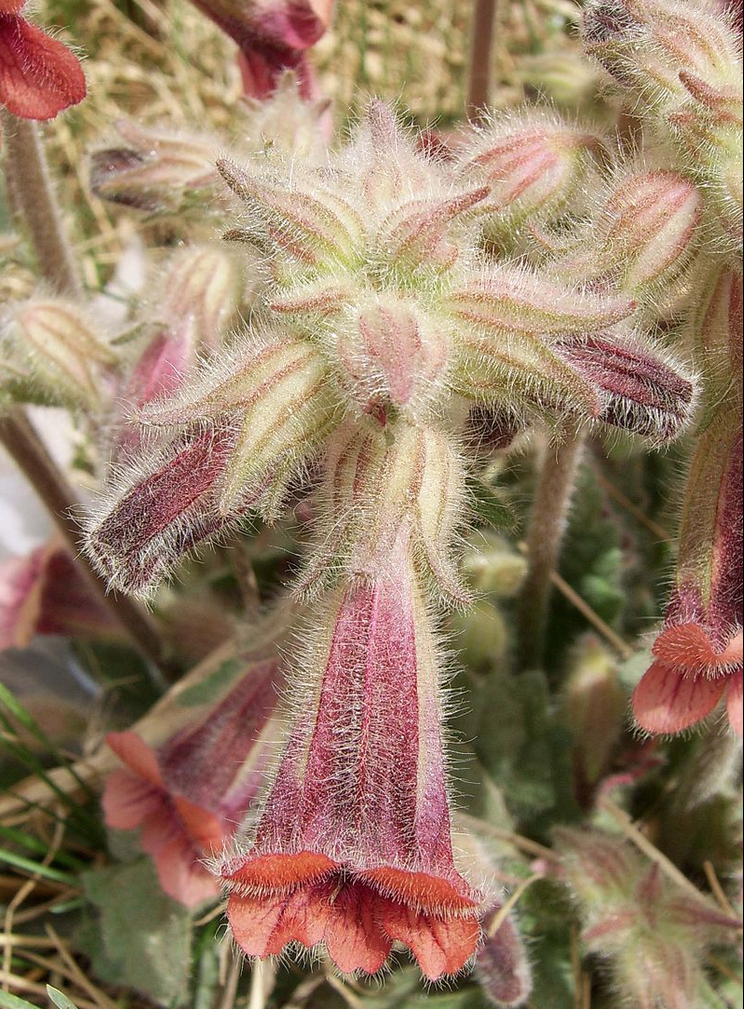Findings from a small but noteworthy study provide new evidence that a traditional Chinese herbal formula can improve clinical markers of osteoporosis.

Researchers compared osteoporosis patients treated with either the mainstay drug alendronate, or a formula known as Dihuang Decoction (DHD), a traditional Chinese prescription long used to prevent and heal bone diseases.
They found similar outcomes in both groups, suggesting that the herbal formula–a TCM staple consisting of six herbs including Chinese Foxglove (Rehmannia glutinosa) and the medicinal Poria (Wolfiporia cocos) mushroom–is equivalent to the prescription drug as far as its impact on bone density.
Researchers speculate that the effectiveness of the Rehmannia decoction as an osteoporosis therapy lies in its natural ability to promote healthy immune functioning.
The results add to the scientific literature documenting this formula’s myriad pharmacological and therapeutic effects. This herbal formula is widely used in TCM preventatively, and as a treatment for various bone and joint diseases and a host of other conditions.
Ancient Medicine, Modern Insights
Investigators in Zhejiang, China compared alendronate against DHD, also called Rehmannia Decoction, in a population of 72 patients with primary osteoporosis (Wan JM, et al. China J Ortho Traum. 2019. 25; 32(6): 535-538).
The patients in the experimental group, who averaged about 64 years old, took DHD twice weekly (one morning dose plus one evening dose on each treatment day).
The alendronate-treated control group were of similar age. They followed a standard alendronate regimen, taking 70 mg orally once a week. Patients in both groups also took 600 mg of calcium carbonate D3, and 0.5 μg of calcitriol capsules per day throughout the study.
The difference in BMD between the two groups following treatment was not statistically significant, suggesting similar rates of improvement with both treatment types.
Over the course of a year, investigators analyzed three key markers of osteoporosis: femoral neck and lumbar vertebrae bone mineral density (BMD), serum collagen type I C-terminal peptide (beta-CTX), and serum osteoclast (SOST) levels.
The two groups began the study with comparable BMD, SOST, and beta-CTX baseline values. After one year, participants in both groups showed statistically significant improvements in femoral neck and lumbar BMD.
The difference between the two groups was not statistically significant, suggesting similar rates of improvement from the herbs and from the drug.
Serum beta-CTX values also dropped across groups following treatment. Elevated beta-C-CTX levels indicate increased bone resorption and are associated with osteoporosis. Participants’ serum SOST values remained comparable after treatment as well.
The researchers propose that DHD, like alendronate, can be an effective treatment for primary osteoporosis.
This preliminary trial reflects a greater emerging interest in studying the ancient formula and its health-promoting properties.
Immune Benefits
Osteoporosis is very common among older adults. In the United States, a rapidly aging population means that the prevalence will only continue to escalate in the years to come.
The immune system may be involved in the development of osteoporosis in some patients. Bone cells and immune cells share a close relationship––both are located in the bone marrow, and they communicate using a shared language of regulatory molecules, signaling molecules, and transcription factors (Zhao H, et al. J Immunol Res. 2018 (2018): 6345857).
Immune cells help regulate the normal process of bone turnover. Abnormal immune system activation can trigger an imbalance between osteoblasts and osteoclasts, the two bone cell types primarily responsible for new bone formation and bone resorption.
The researchers propose that Dihuang Decoction, like alendronate, can be an effective treatment for primary osteoporosis.
Researchers speculate that the effectiveness of the Rehmannia decoction as an osteoporosis therapy lies in its natural ability to promote healthy immune function.
Zhou and colleagues reviewed several studies of the traditional Liuwei Dihuang prescription and the wide range of pharmacological effects it exerts, particularly on the neuroendocrine immunomodulation (NIM) network (Zhou W, et al. Pharma Therap. 2016; 162: 170-178).
In another review, investigators outlined a number of possible mechanisms for Liuwei Dihuang, including promotion or inhibition of multiple types of immune cells (Zhao H, et al. J Immunol Res. 2018 (2018): 6345857).
A 2019 research proposal laid out a protocol for a systematic review and meta-analysis that investigators could use to evaluate the effectiveness and safety of Liuwei Dihuang as an intervention for primary osteoporosis (Liu Y, et al. Medicine. 2019; 98(16): e15282). The findings from that analysis could guide future clinical recommendations for this unique herbal combination in the context of bone disease treatment.
END







